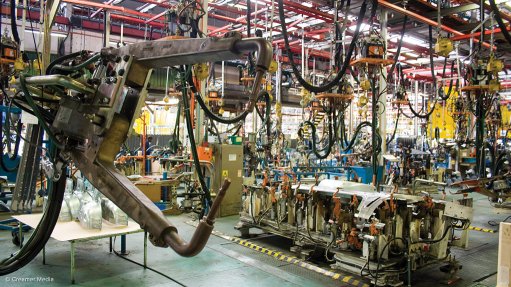
Photo by: Duane Daws
Subdued demand, sluggish construction and mining activity, a volatile rand exchange rate, regulatory hurdles and the effects of third-quarter 2014 strike action had impacted negatively on the local manufacturing sector during the fourth quarter of 2014.
This is according to policy development and dialogue organisation Trade and Industrial Policy Strategies (Tips) economist Baba-Tamana Gqubule who on Tuesday reflected on the findings of recent economic surveys.
Although most respondents to the Manufacturing Circle’s Manufacturing Bulletin for the fourth quarter of 2014 had indicated that business conditions were weak or poor, some improvement was seen in sales.
Gqubule attributed the sales resurgence to several factors including the normalisation of industry following the industrial unrest in the third quarter of the year, increased market coverage, seasonal impulses and extensive promotional campaigns by companies during the quarter.
Gqubule further pointed out that, according to a recent survey by Rand Merchant and the Bureau for Economic Research, business confidence had improved in the fourth quarter of 2014, reaching 51 points, up from 46 points in the previous quarter.
“The survey showed that manufacturing confidence [had] rebounded from 28 to 42 index points between [the third and fourth quarters of] 2014. This outcome was achieved on the back of recovering local and export sales volumes, as well as moderating cost escalations,” she explained.
The Kagiso Purchasing Managers’ Index (PMI), meanwhile, rose to 51.2 points in the fourth quarter of 2014, up from 47.9 points in the preceding quarter.
“A reading above 50 points indicates an increase in the tempo of activity within the sector. In the same perspective, the new sales orders subindex moved into expansion territory, rising from 47.5 points to 52.6 points between [the third and fourth quarter], which is a sign of a recovery in the demand for manufactured goods,” Gqubule said.
She added that, although the employment subindex had edged higher, it remained below the neutral 50-point level.
“This suggests that the manufacturing employment outcome remained muted during the quarter,” Gqubule explained.
She highlighted that “increasingly more” companies were expecting weak or poor business conditions to prevail in the local manufacturing sector over the coming months, which did not augur well for the sector’s revival.